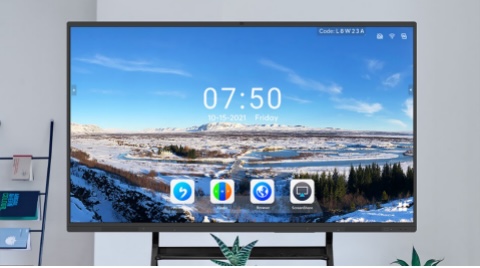The traditional chalkboard has been a staple in classrooms for centuries, but the advent of smartboards has ushered in a digital revolution in education. Smartboards, also known as interactive whiteboards, have transformed the way teachers teach and students learn. This article explores the journey from chalkboards to smartboards and examines how these digital tools are revolutionizing education. From enhanced interactivity to multimedia integration, interactive smartboards offer a myriad of benefits for both educators and learners.
Smartboards bring a plethora of benefits to the classroom. Firstly, they offer enhanced interactivity. With touch-screen capabilities, teachers and students can directly interact with the board, making learning more engaging and interactive. Students can come to the board to solve problems, manipulate objects, or annotate content, fostering active participation and collaboration.
Furthermore, smartboards integrate multimedia elements seamlessly. Teachers can incorporate videos, audio clips, images, and interactive educational software into their lessons, catering to diverse learning styles and making complex concepts more accessible. The multimedia integration creates a dynamic learning environment that captivates students’ attention and boosts their understanding.
ASANO’s smartboards also provide internet connectivity, opening a world of educational resources at teachers’ fingertips. They can access online materials, educational websites, and educational software directly from the board, enriching their lessons with up-to-date information and real-world examples.
In addition, smartboards facilitate content sharing and collaboration. Students can wirelessly connect their devices to the board and share their work or present information to the class. This feature promotes teamwork and peer learning, as students can collectively brainstorm, analyze data, or collaborate on projects using the digital board as a central hub.
Enhancing Education with Interactive Whiteboards:
ASANO digital board for the classroom typically refers to an interactive whiteboard or a smartboard that incorporates digital technology to enhance the learning experience. These boards combine the features of a traditional whiteboard with interactive and multimedia capabilities, allowing teachers and students to engage in a more dynamic and interactive way. Here are some key features and benefits of digital boards in the classroom:
Touchscreen Interface: Digital boards have a touchscreen interface, enabling teachers and students to interact directly with the content displayed on the board. They can write, draw, or manipulate objects using their fingers or a stylus.
Multimedia Integration: Digital boards support multimedia integration, allowing teachers to incorporate videos, audio clips, images, and interactive educational software into their lessons. This multimedia approach makes lessons more engaging and helps cater to different learning styles.
Interactive Learning: One of the primary advantages of digital boards is their interactivity. Teachers can create interactive quizzes, games, and activities that encourage student participation and collaboration. Students can come up to the board to solve problems, drag and drop items, or annotate content.
Internet Connectivity: Many digital boards have internet connectivity, which enables teachers to access online resources, educational websites, and educational software directly from the board. This feature expands the range of educational materials available in the classroom.
Content Sharing and Collaboration: Digital boards often come with features that allow teachers and students to share and collaborate on content. They can connect their devices wirelessly to the board and display their work or share information with the class. This feature promotes teamwork and active participation.
Note-Taking and Annotation: Digital boards provide the ability to take notes and annotate over content. Teachers can highlight important points, draw diagrams, or write explanations directly on the board, which can be saved and shared with students for reference.
Recording and Playback: Some digital boards offer recording and playback features, allowing teachers to record their lessons or presentations. This feature benefits students who can review the material later at their own pace or students who were absent during the class.
Assessment and Feedback: Digital boards facilitate real-time assessment and feedback. Teachers can use various interactive assessment tools to gauge student understanding instantly and provide immediate feedback. This feature helps identify areas that need further clarification or review.
While implementing smartboards presents challenges, the transformative potential they offer makes the journey worthwhile. Embracing the digital revolution in education through the adoption of smartboards equips students with the skills and experiences necessary for success in the 21st century. If you need high-tech interactive smartboards for school to improve the efficiency of teaching quality, weclome to contact ASANO for more details.
